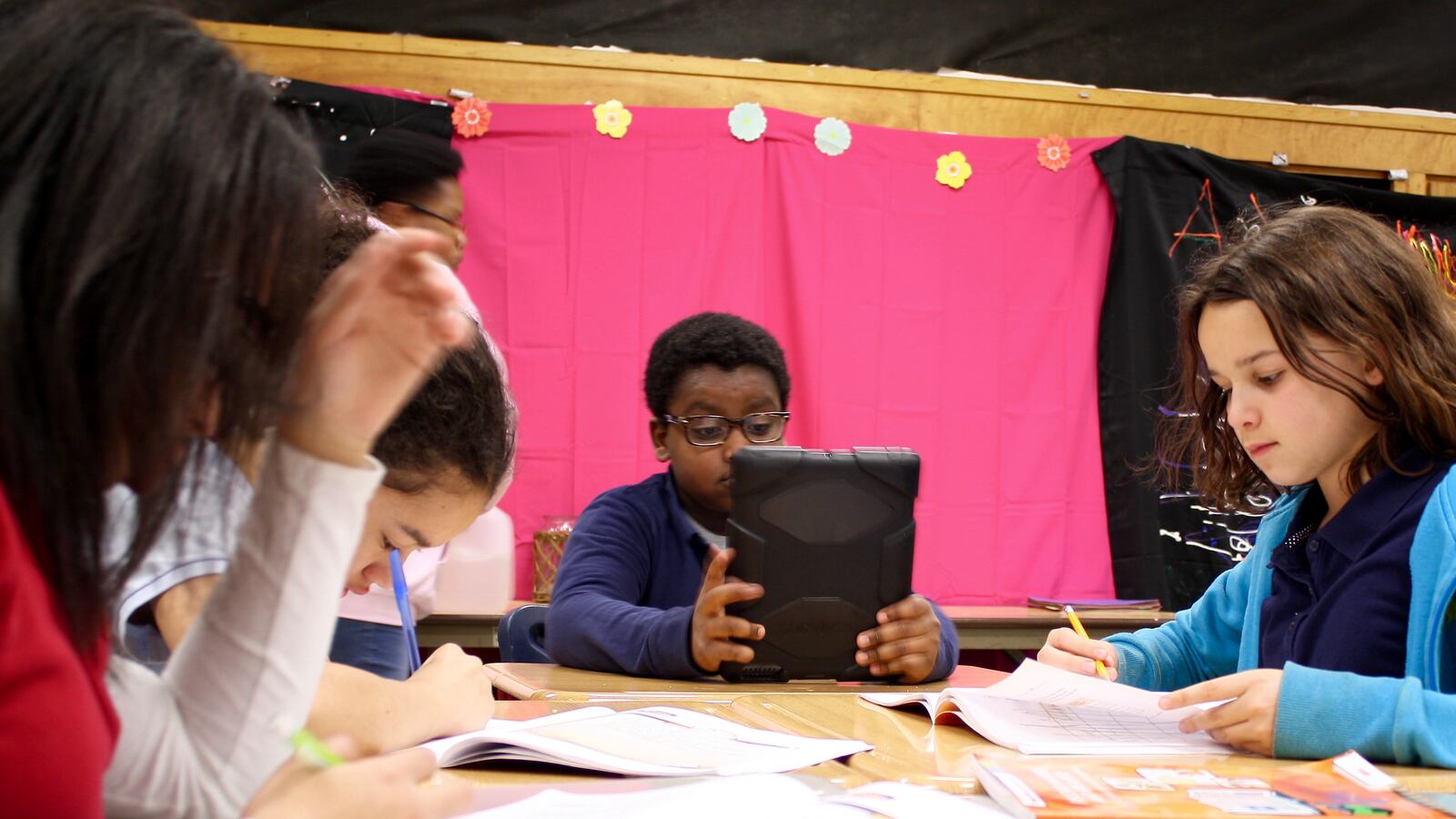Indiana Senate Republicans want to boost funding for teacher bonuses and reduce losses for school districts serving lots of poor students, according to a budget plan released Thursday.
The Senate proposal calls for raising education funding by $358 million, or 3.25 percent, over the next two years — the most of any state budget plan presented this year. Per-student funding would also increase slightly to $5,274 in 2019, up from the $5,088 school districts received in 2017.
The plan includes few surprises, but marks the next phase of the state’s budget negotiations. The House proposed a smaller $273 million, 2.8 percent funding increase for education last month, although the House plan would include higher per-student funding. Much of the Senate increase appears to come from the provisions for teacher bonuses and poor students.
According to Sen. Luke Kenley, R-Noblesville, chairman of the budget-making Appropriations Committee, the funding increase includes $40 million per year directed at the “complexity index,” which determines how much extra money districts receive to educate poor students. That will primarily benefit urban and rural schools, he said. Based on changes to how that formula is calculated, most districts still lose complexity dollars, but in the Senate plan, the losses are less steep than what the House projected.
“We thought that Indiana has a good reputation across the nation as funding those who have the greatest needs, so we thought we needed to work on that a little bit more,” Kenley said. “I think it’s an equitable result.”
Democrats applauded those increases, though the committee’s ranking Democrat, Sen. Karen Tallian, said they weren’t enough.
Under the Senate’s budget, every district in Marion County sees its basic state aid and per-student funding increase, including Indianapolis Public Schools, which would receive cuts in the House plan.
Growing suburban districts like Zionsville and Hamilton Southeastern would get sizable funding bumps from the Senate, while shrinking districts, including East Chicago and Gary, would lose state money. But overall, the state’s poorest districts seem to fare better under the Senate’s plan than the House’s.
The Senate’s budget also adds back in $40 million per year for teacher bonuses, which the House had removed from earlier proposals — one of a number of changes proposed by state Superintendent Jennifer McCormick. The bonus program would work slightly differently than it has in years past, and dole out money based on school enrollment rather than ISTEP scores. The change comes after wide disparities in last year’s bonuses were criticized by educators across the state.
“We think, number one, that we need to make sure we get more money to the classroom teacher,” Kenley said. “We think teachers everywhere that are doing a good job should be rewarded for that.”
The Senate’s new plan would distribute $39 per student to each district in the state. That money would then be divvied up among teachers rated “effective” or “highly effective.” Of that money, up to 50 percent could be added into a teacher’s base salary. That would help teachers boost their future pension payments, which year-end stipends do not, Tallian said.
Like the House budget plan, the Senate budget increases funding for English learners, but it weights that funding toward schools where English learners make up at least 5 percent of their enrollment. Overall, an additional $11.5 million is set aside for those schools over the next two years.
The Senate plan also adds in requirements for virtual schools, mandating that they report information about class size, teacher-per-student ratios, and how often teachers have in-person meetings to the education department each year. Those schools wouldn’t qualify for the English-learner or teacher bonus grants, and would only get 90 percent of the basic per-student funding amount from the state, as they do now. The House’s plan would increase that to 100 percent.
The state’s voucher program would see its funding grow over the next two years under the Senate plan, as with the House plan. Indiana is projected to spend more than $156 million by 2018 and $167 million by 2019 on the program, up from $146 million in 2017. The Senate also includes those figures as a budget line item, rather than just as part of the funding formula, which Kenley said was more transparent. Tallian agreed.
“It’s a great move that we’ve been calling for for several years,” she said.
The Senate budget also includes:
- $16 million per year for the state’s preschool program, a $4 million increase per year. The proposal also allows programs from all 92 counties participate, rather than the current five — similar to bills that passed out of the Senate earlier this year.
- $1 million per year for a home-based early education program called UpStart.
- $500,000 per year for dual language immersion programs.
- $1 million per year to “align” initiatives regarding science, technology, engineering and math education.
- $12.5 million per year for the Charter and Innovation Network School Grant Program.
- Funding increases for special education and honors grants.
- Funding increases for Advanced Placement and PSAT testing.

